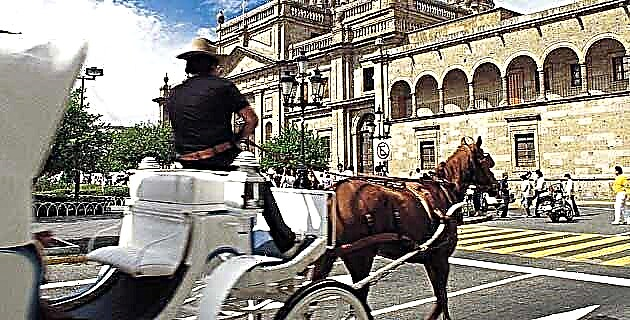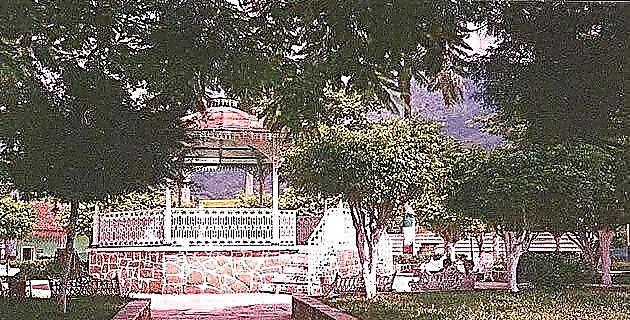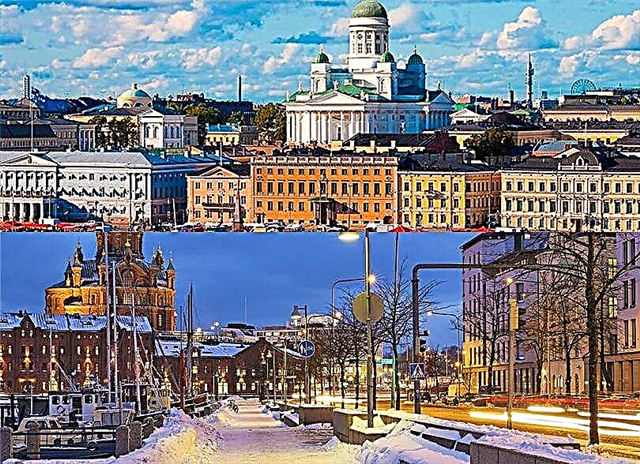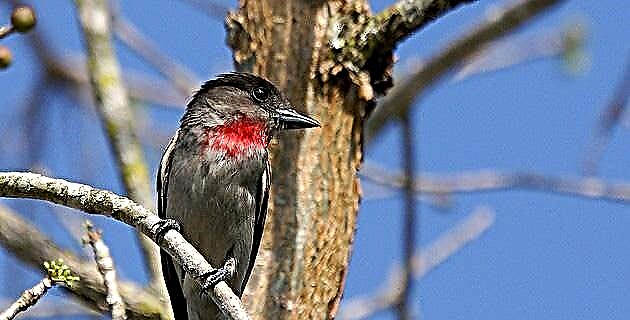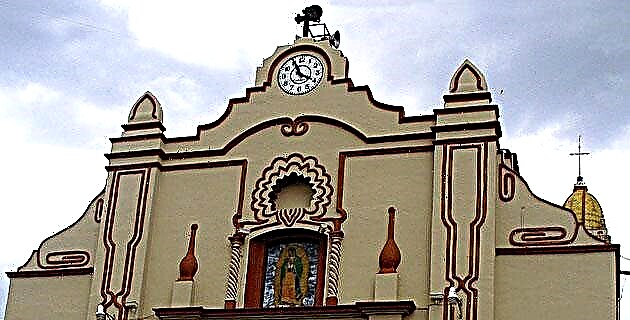
It was in 1882 when the first group of Italian refugees arrived in Mexico to found the agricultural colonies of Chipilo and Tenamaxtla; they were the survivors of the overflowing of the river Piave that left many people homeless
Chipilo is a small town located 12 km southwest of the city of Puebla, on the highway that goes to Oaxaca and 120 km from Mexico City.
It occupies a portion of the fertile valley of Puebla, with a semi-dry and temperate climate, suitable for the sowing of cereals, fruits, vegetables and fodder for raising poultry and cattle and pigs. The preponderant occupation is the milk agribusiness.
So far, there is nothing in Chipilo that makes it different from many of the towns in our country, except if we take into account the odyssey of its foundation, its hard-working inhabitants and the exotic beauty of its blonde women.
One misty morning Alfredo and I left Mexico City for this corner of our province, with the purpose of doing a report on that Chipilo "unknown" to most Mexicans.
It is dawn on September 23, 1882 and the first rays of the sun illuminate the Citlaltépetl with its perennial snows that crown its summit. This seems a good sign for the Italian immigrants from different parts of their country who are led to their new homeland, by the Atlantic steamer from the port of Genoa. Their destiny, to found agricultural colonies in Chipilo and Tenamaxtla in the district of Cholula, Puebla, names as enigmatic for them as the future that awaits them.
The shouts of joy, at the arrival, contrast with the externals a year ago (1881), full of pain and despair when their houses and fields were washed away by the Piave River that had overflowed in the spring thaw as it ran towards the Adriatic.
The inhabitants of those towns found out that Mexico was opening its arms to receive them as working people, to populate certain regions suitable for agriculture, and although it was public knowledge that some ships had already set sail for that country of America carrying people to found colonies in various areas of the country, what the arriving emigrants did not know was that both to them and to those who had left before, the emigration agents had described an unreal Mexico.
After docking the ship in the port of Veracruz and once the sanitary inspection of the law had been carried out, everyone rushed down to kiss that land for the first time, and to thank God for having brought them safely to their new homeland.
From Veracruz they continued the journey by train to Orizaba.
The procession continued their journey by train and reached Cholula and then Tonanzintla. They passed through the lavish lands of the Hacienda de San José Actipac, and San Bartolo Granillo (Cholula), the latter assigned to settle; However, due to personal interests of the political chief of the region, these lands were exchanged for the less fertile of the Chipiloc Hacienda. Finally, after their agitated exodus, they arrived at the “Promised Land”, they arrived at their land, at their home and to top of their happiness they found a pleasant surprise: some families from Chipiloc were already settled in the Hacienda de Chipiloc. the “Porfirio Díaz” neighborhood in the state of Morelos.
On Saturday, October 7, 1882, day of the feast of the Virgen del Rosario to which the settlers have special devotion, they all gathered in the chapel of the hacienda and in a simple but memorable ceremony, the Fernández Leal colony was officially established. in honor of the engineer Manuel Fernández Leal, an official of the Mexican Ministry of Development, and they made the unanimous determination to celebrate that date year after year as the anniversary of the founding of the colony in Chipiloc.
A few days after the celebrations for the initiation of the nascent colony ended, the hard-working immigrants began their titanic work to convert almost sterile fields covered with tepetate into lands suitable for agriculture.
The slowing down of the bus in which we were traveling and the growing parade of buildings in front of my window brought me back to the present; We had just arrived in the city of Puebla!
We got out of the vehicle and immediately boarded another bus to go to the town of Chipilo, via Atlixco. After about 15 minutes of travel, we reached our destination. We wandered through the streets of the town and took pictures of what most caught our attention; We went into an establishment to have a drink, a fortunate decision, because there we found the warm provincial welcome.
Mr. Daniel Galeazzi, an elderly man with thin white hair and large mustaches, was the owner of the store. From the beginning, he noticed our reporting intentions and immediately invited us to try a delicious "oreado" cheese.
Mangate, mangate presto, questo é un buon fromaggio! (Eat, eat, it's a good cheese!)
Upon hearing this unexpected invitation, we asked him if he was Italian, and he replied: “I was born in Chipilo, I am Mexican and I am proud to be one, but I have Italian ancestry, coming from the town of Segusino, from the Veneto region (northern Italy ), as were most of the ancestors of the inhabitants here. By the way, "Mr. Galeazzi added vivaciously," the correct name is not Chipilo, but Chipiloc, a word of Nahuatl origin that means "place where the water runs", since a long time ago a stream flowed through our town, but with time and the custom, we were removing the final “c” from Chipiloc, perhaps because it phonetically sounds like an Italian word. When the settlers came to settle, there was a water hole on the eastern side of the hill of this place that they baptized as Fontanone (Fuentezota), but it has disappeared, dried up by the urbanization of the town.
Little by little some members of the Galeazzi family gathered, as well as some beautiful clients. A young man, a member of the family, who paid great attention to our talk, intervened in it and commented promptly:
“By the way, during the celebrations of the first centenary of the founding of Chipilo, the hymn of Chipilo was made public, composed by Mr. Humberto Orlasino Gardella, a colonist from here and who unfortunately has already passed away. It was a very emotional moment when hundreds of throats intoned with deep feeling their verses that reflect the odyssey of the immigrants on their journey from Italy to found this colony, and the gratitude to Mexico for their welcome. "
“We have tried to keep certain traditions alive,” intervened Mr. Galeazzi- and immediately added with liveliness that this type of cheese that we have been savoring is accompanied by the traditional polenta, a typically original dish from the northern region of Italy.
One of the beautiful ladies who accompanied us added timidly: “Other popular manifestations of our grandparents have also remained.
“We have, for example, the tradition of laveccia mordana (the old mordana) or simply as we know it here, the burning of laveccia (the burning of the old woman), which is celebrated on January 6 at 8 at night. It consists of making a life-size doll with different materials and setting it on fire to burn it to the astonishment of the children who do not lose detail. Then, as emerging from the remainder of that already incinerated figure, a young woman in a regional costume appears as if by 'magic art' and begins to distribute presents, sweets and other objects among the children. "
Mr. Galeazzi tells us about the game of bocce ball: “it is an ancient game played since ancient times in the Mediterranean area. It seems to me that it originated in Egypt and later spread throughout Europe. The game takes place on a packed dirt field, without grass. Bocce balls (wooden balls, synthetic material or metal) and a smaller one, bowling alley, of the same material are used. The bowls must be thrown at a certain distance and the one who manages to bring the bowling closer to the bowls wins ”.
While talking, Mr. Galeazzi rummaged in one of the drawers of the store; finally, he took a printed sheet and handed it to us saying:
“I give you a copy of the first issue of Al baúl 1882, a bulletin on the sociocultural life of Chipilo, which was distributed among its inhabitants in March 1993. This informative organ was the result of the literary collaboration of several of the interested settlers in preserving both the Venetian dialect and the beautiful traditions that we inherited from our ancestors. All efforts have been made on our part so that this communication link continues to this day. "
Thanking all our hosts for their kindness, we said goodbye to them with the popular ¡ciao !, not without accepting their suggestion that we climb the Cerro de Grappa, around which the town has spread. We seemed to be looking at a wooded island among a sea of buildings.
In the course of our ascent, we passed interesting places: the old Hacienda de Chipiloc, now the Colegio Unión primary school, owned by the Salesian nuns; a Casa D’Italia social room; the Francisco Xavier Mina primary school, built by the government (by the way, this name was officially given to the town in 1901, however it has survived with the approval of its inhabitants, that of Chipilo).
As we reached our goal, the well-cultivated fields and reddish roofs of the town spread out at our feet like a chessboard, alternating with certain wooded areas, and on the horizon the city of Puebla.
On the top of the hill, there are three monuments. Two of them, adorned with classical religious sculptures: that of the Sacred Heart of Jesus, and the Virgin of the Rosary; the third simplest, with a rock of regular dimensions in its upper part. All three pay an emotional tribute to the Italian soldiers who fell in battle during the “Great War” (1914-1918) on the banks of the Piave River and on the Cerro de Grappa. From this comes the rock that adorns the last monument, which was brought to the country by the royal ship Italia in November 1924. Faced with that isolation and absolute silence, only interrupted from time to time by the soft whisper of the wind, he awoke in I have the desire to pay homage to those who know how to die for the sake of it (an ideal, and thank God for being a citizen of such a hospitable country.



